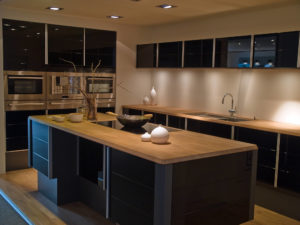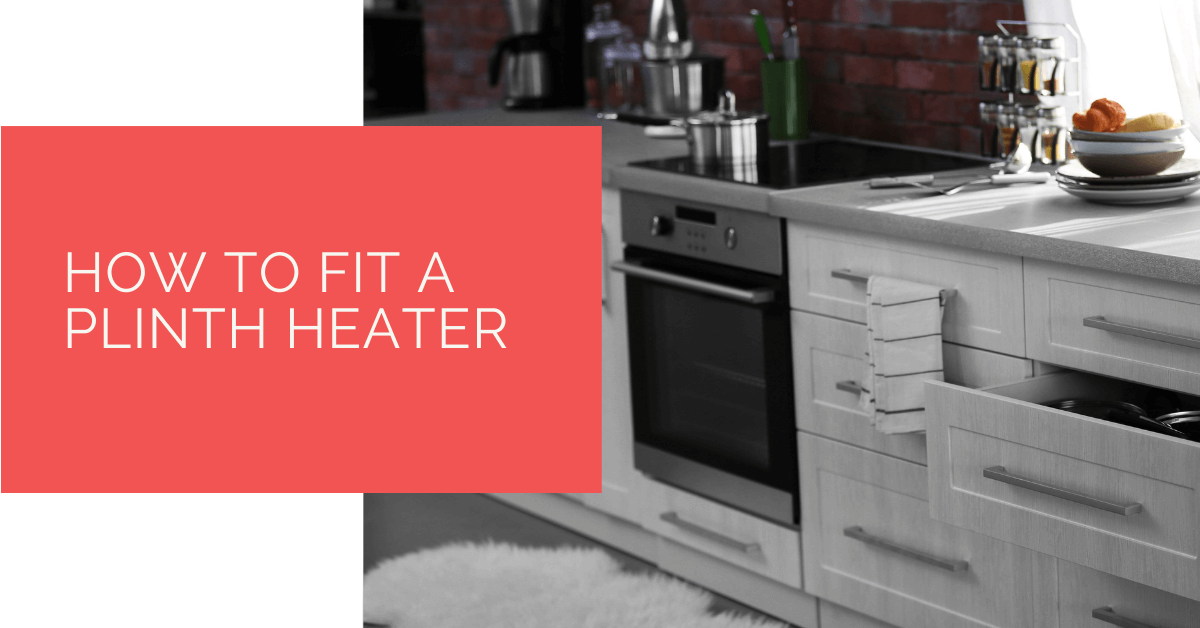A bulky radiator tends to take a lot of space. But what if heat is necessary for your kitchen space? Working in the kitchen may already seem like a chore at times. Now imagine working with nothing to keep you warm.
The central heating system may not be enough to supply adequate heat to your kitchen. Maybe your heating broke, and you need a cheaper alternative that’s easy to set up.
Don’t worry, technology has advanced enough to provide a solution for this!
Plinth heaters are a compact alternative to this issue. You can just fit them in a small space, such as a utility counter or your kitchen counter.
To understand how to go about setting one up, let’s begin by understanding what they are.
Contents
Key Takeaways
- Plinth heaters are a compact alternative to traditional radiators and can be easily installed in small spaces like kitchen cabinets, providing a cost-effective heating solution.
- Plinth heaters come in two major types: electric, which plug into a power supply, and hydronic, which are connected to the central heating system, offering long-term savings despite a more complex setup.
- Plinth heaters are a practical investment for addressing extreme temperatures caused by climate change, offering both affordability and efficient heating solutions for homes.
Setting up A Plinth Heater
A plinth heater can be set up quickly and will only require a few hours to do so. Usually, they do come with a manual but let us guide you through the necessary steps to set up these appliances.
- Carve out the plinth for a space to install your heater. The heater has to be installed on a flat, even surface behind this plinth.
- It’s time to install the isolating valves. These are flexible pipes that can be connected from the heater to the central heating system. This will supply warm air.
- Now, make sure you connect all the electrical systems in place. You should maintain a minimum contact gap of 3 mm between each connection.
- Recheck if the heater is positioned correctly. There must be gaps to supplement airflow. Additionally, ensure that no cables are bunched together.
- To be safe, always check the guide provided with the heater. This is from the manufacturers themselves and helps you avoid any common errors.
- Contact a professional if you feel stuck in any part of the process.

What Is a Plinth Heater?
To put it in simple terms, a plinth heater is a small, letterbox-shaped heater. The size allows you to easily place it in one of your kitchen cabinets, saving you kitchen space.
These compact heaters come in two major types– electric and hydronic.
Electronic plinth heaters plug directly into a power supply. As a result, you only need a plug point, which you can easily set up. When the device is working, heat is circulated electrically via the fan present in the machine. The only downside is that they consume considerable power.
Hydronic plinth heaters also called mini radiators, on the other hand, are connected to the central heating system of the house. The heaters are supplied with hot water, which they use to distribute heat throughout the room with a fan.
The set-up can be a bit gruelling, but they save money in the long run.
Do You Need a Plinth Heater?
As a result of climate change, extreme temperatures have become the new normal. It is hence essential to be ready and have a heating source for your house.
Since space and price may be some factors that might make you apprehensive, plinth heaters are ideal as they solve both these issues. Not only are they affordable, but hydronic plinth heaters can also help you save costs in the longer run.
So, think of these appliances as more of an investment for they pay for themselves in the long run.

Are Plinth Heaters Expensive?
A bulky radiator is guaranteed to leave a hole in your wallet. But the same is not the case for plinth heaters.
Granted, an electrical heater is going to cost you more than a hydronic one. But even so, that’s only because of how expensive electricity can be.
It is a good idea therefore to invest in hydronic plinth heaters for this very reason. They cost anywhere between £200 to £300 initially and give you an excellent return for your investment by not having recurring costs.
Heat Pump Source: Reliable Heating and Cooling Solutions
At Heat Pump Source, we take pride in our unwavering commitment to serving the UK with top-tier HVAC solutions. From the efficiency of heat pumps and the cool relief of air conditioning to the warmth of boilers, radiators, and underfloor heating, our dedicated team is always at the forefront of innovation. We understand the unique needs of every household and business, and we strive to provide dependable health and cooling products and services that are tailored just for you. Ensuring your comfort and satisfaction is our utmost priority. Whether you have questions, need guidance, or require support, we’re always here to assist. Please don’t hesitate to contact us; we’re eager to be of service.
Conclusion
During the harsh winter, a heater is the only device that can provide adequate warmth. Most households already have a central heating system, but this may not be enough at times.
Plinth heaters can be set up with relative ease and are compact enough not to be noticed. This is not necessarily a disadvantage.
Moreover, they use electricity or your central heating system for power. This enables these heaters to produce a satisfactory output even with their smaller size.
About the Author
At Heat Pump Source, our articles are the product of a collaborative effort among a team of highly skilled HVAC experts. Our dedicated professionals, hailing from diverse backgrounds in heating, ventilation, air conditioning, and refrigeration, contribute their extensive knowledge and experience to every piece of content. This multidisciplinary approach ensures comprehensive coverage. Our commitment is to deliver authoritative, reliable, and tailored advice to meet the unique needs of every household and business across the UK.

